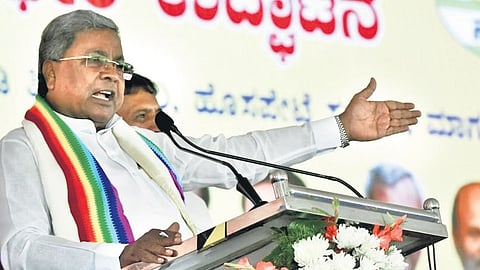

The state government, earlier this week, set up a Special Action Force (SAF) to curb communal violence in Coastal Karnataka. It is a welcome move to improve policing in the region that has witnessed many revenge killings and communal flare-ups. But the SAF alone will not be enough to ensure lasting peace and communal harmony. There is a need for a holistic approach to strengthen the social fabric.
By constituting the special force, the government has shown its intent and resolve to tackle the serious issues impacting the districts that are otherwise doing remarkably well in various indices. As per the latest Economic Survey, Bangalore Urban’s Gross District Domestic Product (GDDP) is Rs 9,98,659 crore with 39.1% contribution to State GDP, followed by Dakshina Kannada with 5.4%; Bangalore Urban district per capita income is Rs 7,38,910 is the highest among all the districts, again followed by Dakshina Kannada at Rs 5,56,059 and Udupi at Rs 5,33,469. In the Human Development Index, industry, and services sectors, Dakshina Kannada is the second place after Bengaluru Urban. The coastal districts in the state are also known for their top-quality higher education institutions that attract students from different parts of the state, even the country.
However, on the flip side, this region remains communally hyper-sensitive, and that could impact its developmental prospects. Frequent communal incidents bring a sense of fragility to peace in the region, requiring constant vigil to maintain it. Even the Government Order (GO) constituting the SAF cites the state police chief’s recent letter expressing concern over an increase in communal incidents in Dakshina Kannada and Udupi districts, and the potential of smaller incidents quickly evolving into major challenges to maintain law and order.
The SAF, consisting of 248 officials, headed by a DIG-rank officer, could help improve the intelligence-gathering network and mechanism. Apart from this primary mandate, it also keeps track of social media posts, hate speeches, and activities of fundamentalist elements. It will be stationed in Dakshina Kannada, Udupi, and Shivamogga, which the government considers communally sensitive districts.
The dedicated force will have a clear mandate. However, the government needs to ensure that the officers, especially the constabulary, which consists of nearly 90% of the new force, are properly trained and sensitised to handle the challenging task.
Also, the government must ensure that it is not weaponised against any group or community, and its functioning should steer clear of any such impressions. Any misstep on that front could prove counterproductive. It must create a sense of deterrence among the anti-social elements, without alienating communities at large.
There is also a need to go beyond the traditional way of policing, which is to react to crimes. Instead, authorities must look at more proactive measures to address concerns of polarisation by bringing people together. Although Peace Committee Meetings are meant to unite leaders from different communities, the situation in coastal Karnataka shows that they are ineffective, and the authorities have failed on that front.
The government and the state police should take a leaf out of former IPS officer Suresh Khopade’s phenomenal work in the late 80’s-90’s in Bhiwandi in Maharashtra. The town – in Thane district of Maharashtra, located 20 Km northeast of Mumbai – had suffered terrible communal riots for decades. Khopade, who was posted there in 1988 – four years after the 1984 riots there – brought drastic changes through his community policing initiatives. It remained peaceful even during the 1992 communal violence that gripped the nation after the Babri Masjid demolition.
Mohalla Peace Committees were one of the major initiatives that helped Khopade to bring together all stakeholders in the locality to create a sense of security and responsibility among them. Khopade says the committees are a panacea for all government and police problems. Without any requirement for a change in law or additional manpower, they can address many issues. The former police officer has written extensively on his initiatives in his book Why Mumbai Burned... and Bhiwandi Did Not.
The committees involve all stakeholders in the locality, including taxi and auto drivers, shopkeepers, doctors, ward corporators, people representatives, and local officials, to discuss and solve their local issues. “Our role is to bring all those people on one platform. Not in the police station, but at any public place or government office, once a month. Once Ramlal and Abdulla come together, initially there may be chaos, but when they come together frequently, the dialogue starts. It helps them to understand each other well and overcome misunderstandings and biases. They become friends,” he says.
From the policing point of view, local committees consisting of common people from different communities help intelligence gathering become effective. It also brings transparency to the local administration. Such proactive measures, coupled with effective policing, could address more serious issues of polarisation by building bridges between communities and strengthening the social fabric in the region.